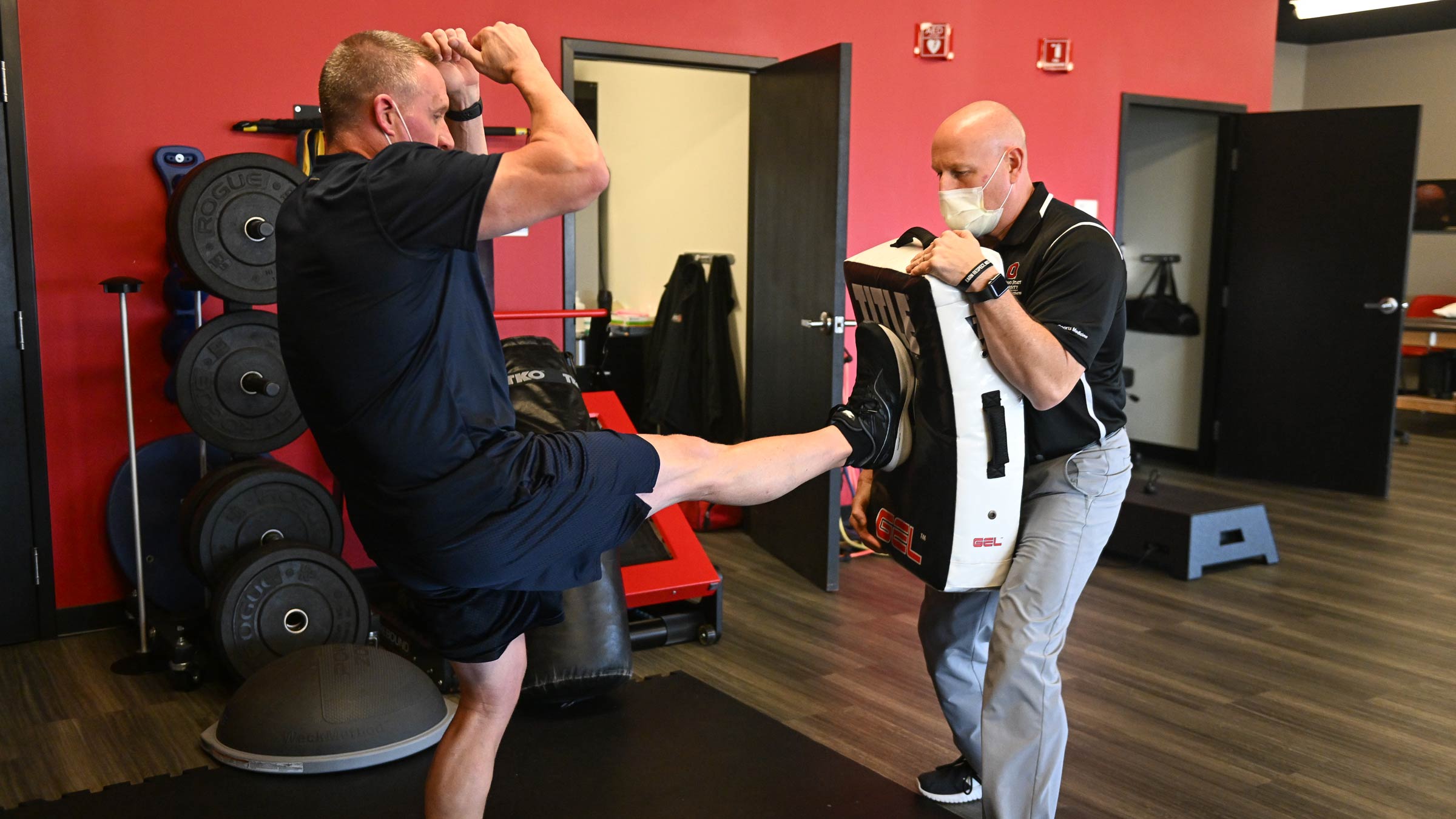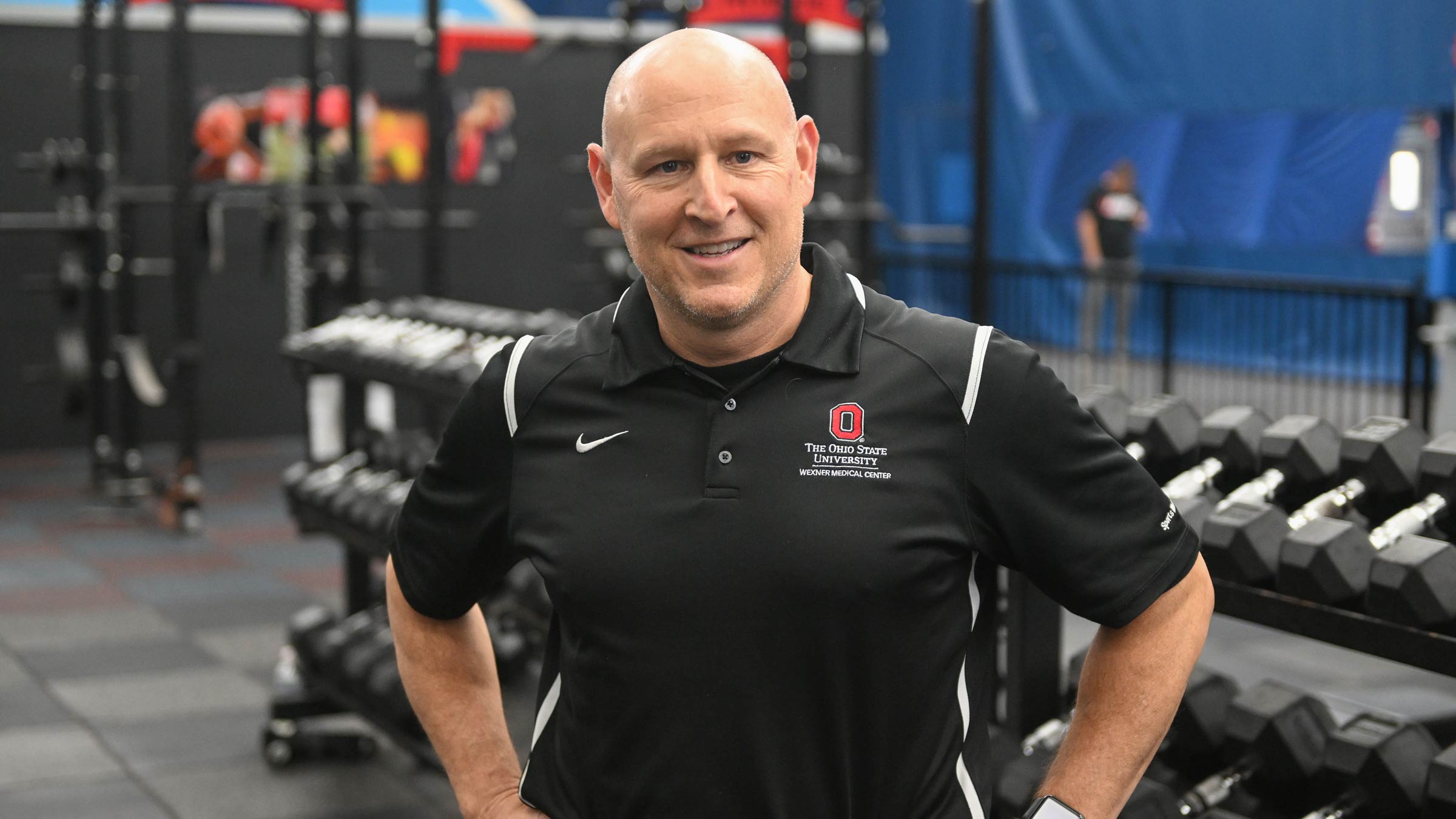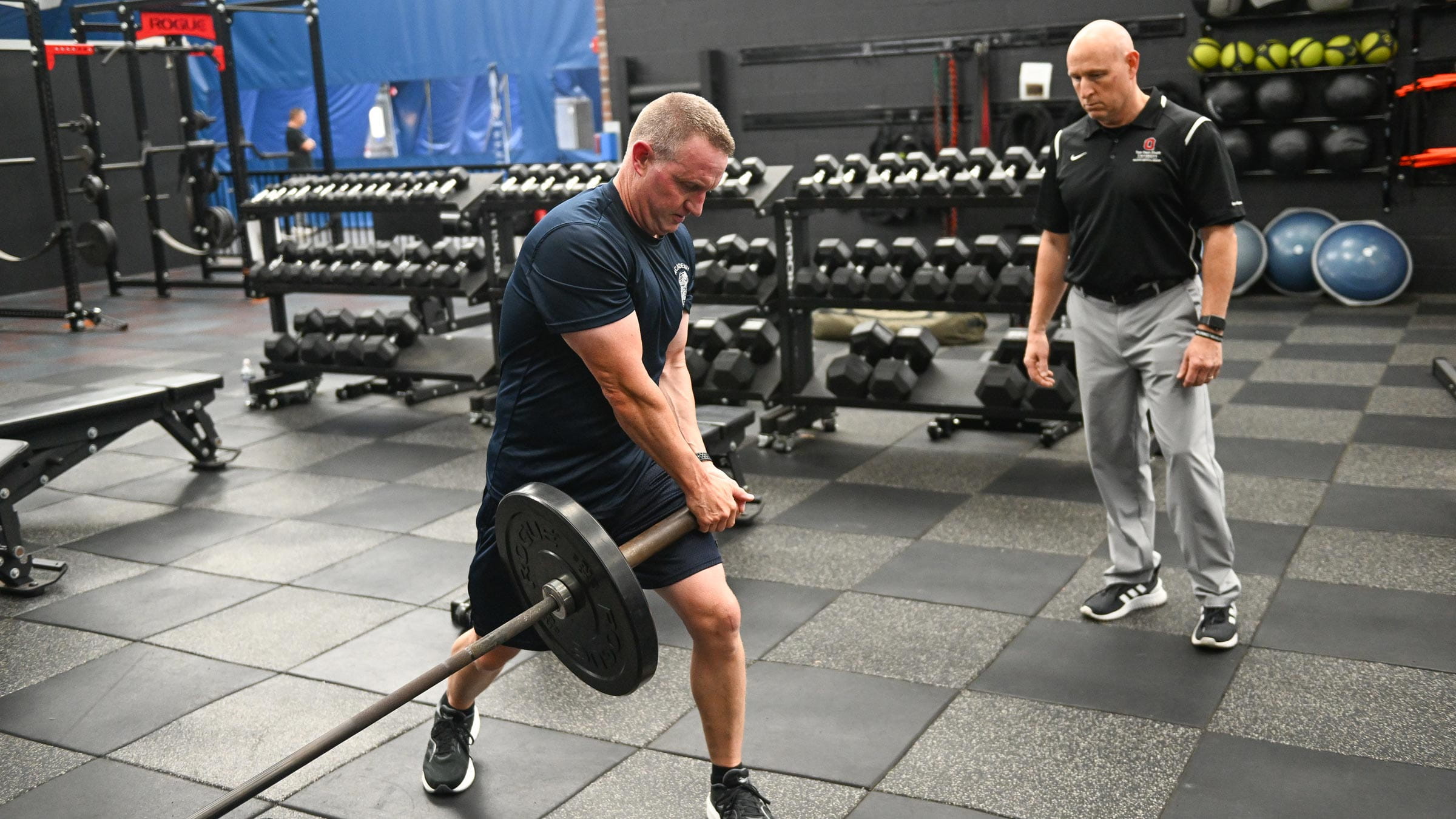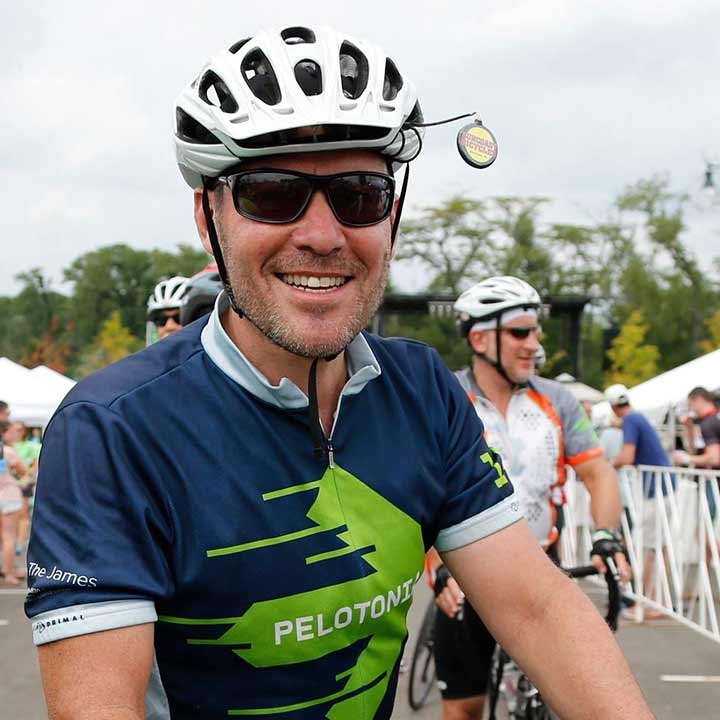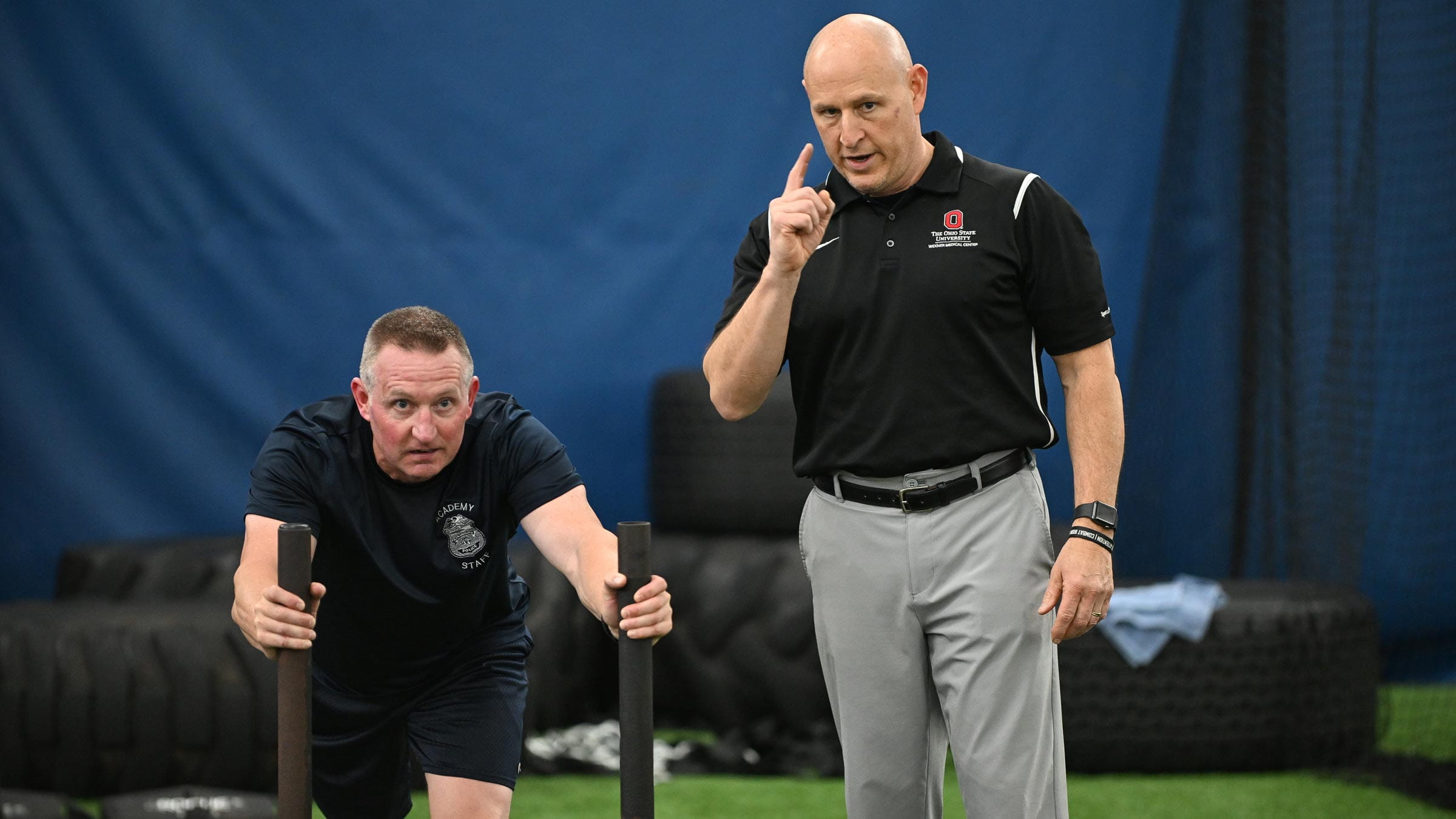
Police officer Chad Knode thought he knew the ins and outs and all the exercises of physical therapy. But that was before he tried a program aimed at the unique physical demands of first responders like him.
“I’ve had eight orthopedic surgeries, but I’ve never had physical therapy like this before,” the longtime officer with the Columbus Division of Police says between short, intense repetitions of drills that simulate kicking, punching and fighting back after being tackled to the ground. “I wish I knew Chris [Kolba] 15 years ago when I had shoulder surgery.”
Addressing the specialized physical therapy needs of first responders
This unique form of physical therapy is part of a program developed for first responders called Sports Physical Therapy for the Tactical Athlete. It was developed by Chris Kolba, PT, PhD, MHS, a physical therapist at The Ohio State University Wexner Medical Center, and is specifically designed for law enforcement officers, firefighters and rescue personnel, EMTs and paramedics.
“The idea was, let’s take the sports-performance model we developed for our Ohio State athletes and bring it to first responders,” Kolba says. He believed that these men and women, who perform physically demanding activities on a regular basis, would benefit from a physical therapy program tailored to their on-the-job physical requirements.
And so, Kolba, who’s a strength and conditioning specialist as well as a martial arts expert, developed the program for first responders, incorporating rehab, strength and condition plus combat and duty-related exercises and drills to maximize their ability to return to the demands of their jobs.
Training designed for real-world first-responder situations
Participants use free weights, kettlebells, elastic bands, weighted sleds, heavy bags, focus mitts and large stability balls. The result is a high-intensity physical therapy session that borrows from the principles of elite sports physical therapy.
For example, “a police officer may have to pick someone up and move them,” Kolba explains. This is why Knode did several repetitions with a 70-pound heavy-bag, lifting it off the ground and carrying it 10 feet across the floor. He alternated between this exercise and one in which he power-kicked a large pad held by Kolba. The force from each kick moved the therapist back about a foot.
Knode was 11 weeks out from knee surgery and almost ready to return to active duty. “We’re toward the end of his PT, and this is where it gets fun,” Kolba says with a smile. “This is what separates us from other PT clinics.”
“I agree,” Knode said, the sweat dripping down his forehead. “Chris understands what we do and what we need to do to get back to that level physically. This is totally different than any other therapy I’ve ever done.”
Expanding the program to train more first responders
The program was initially designed for rehabilitating first responders from their injuries and surgeries. It has expanded to include assessment and conditioning components to build strength and flexibility and prevent injuries. The program also incorporates Ohio State experts in nutrition, sports psychology and a wide range of physicians and specialists, including orthopedic surgeons, creating a complete medical team for the participants in the program.
Kolba currently works with members of the Columbus Division of Police and the Franklin County Sheriff’s Office (FSCO), including the FSCO SWAT Unit, and has seen FBI and ATF agents in the clinic. Other members of the Sports Medicine program have been trained by Kolba and work with first responders at other Ohio State physical therapy facilities throughout central Ohio.
Zach Webster, PT, DPT, coordinates the program. “The goal is to ensure that these first responders are confident they’ll hold up when they’re back on the job,” he says. “They have to return to work with 100% confidence for their safety and the safety of their team and the community, and our knowledge and team can help them get to this point.”
Kelly Henschen, PT, DPT, works with the approximately 100 firefighters and paramedics of the Mifflin Township Fire Department within the city of Gahanna. “I was interested in being part of Chris’s program right off the bat,” she says. “I’m married to a Columbus firefighter, so it’s personal for me and I’ll do anything I can to support what they do.”
The program with the Mifflin Township Fire Department includes one-on-one assessment sessions with each member of the department, followed by recommendations for strength training and injury prevention exercises they can do in their fire stations. “And, if they’re having any pain issues, we can work with them to reduce their pain and, if needed, schedule them for visits with our [Ohio State] doctors,” Henschen says. “We have a system in place to get quick access to the medical care they need.”
Improving quality of life by addressing mental and physical health
Mifflin Township Fire Chief Frederick Kauser says one of the keys to the success of the program over the past two years has been building trust between his firefighters and Henschen and her team. To build this type of relationship, the physical therapists have ridden with crews and taken part in training exercises. Another key is bringing the program directly into the township’s fire stations.
“I’m very passionate about this,” Kauser says. “We’re motivated to prevent and reduce the impact of injuries on our firefighters’ quality of life, and what we’re seeing from this program are indications this will have a significant influence on preventing injuries and will create healthier firefighters.”
Wellness programs to address the physical and mental demands of first responders have become more important in the past decade, Kauser says.
“I would encourage every fire chief to consider adding this type of occupational and physical therapy to their firefighters’ health and safety and wellness programs.”
After an injury or surgery, Webster says, first responders initially undergo traditional physical therapy that includes load management, activity modification, structured strength progression and stability exercises that improve overall mobility and resilience. “Our physical therapists get them through the initial stages, the acute stage,” he says. “And, when they’re ready, we connect them with members of our rehabilitation and conditioning team as part of the Tactical Athlete program.”
“That’s when we hit the accelerator and apply our advanced techniques,” Kolba adds.
“An important component is building relationships and trust, being able to relay these treatment strategies in a way that resonates with this population is paramount,” Webster says.
Knode has a lot of confidence in Kolba. “He knows the right things to have us do and the level we need to get back to, and he knows how to push us to get to that point,” he says. “We need that.”
His physical therapy session ended with a series of exercises using the sled, a football-style exercise that is extremely difficult. “Ten weeks ago, I never thought I could push that sled, and now I’m doing it with extra weight on it,” Knode says. “I’m totally confident now, and that confidence will carry over to the first day back on the job.”

When you’re first in line to respond, we help you prepare to perform
Explore Ohio State’s Sports Physical Therapy for the Tactical Athlete
Learn more


